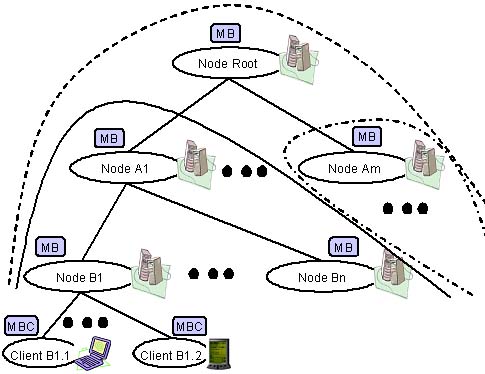MUMOC Metadata BrowserThe module offers functions for metadata querying, inserting, and deleting. In addition, it encapsulates dynamically modifiable strategies to verify VoD caching convenience for a certain node. MUMOC currently employs a locality-based strategy that considers the already reached replication degree of the VoD flow in the locality. The Metadata Browser module (MB), given a multimedia title, description, and eventually hints about the desired VoD quality, searches and returns the required multimedia presentation, i.e., its corresponding metadata. Any MB locally hosts a partial replica of XML-based metadata for the available VoD contents and can coordinate with other distributed metadata browser components to retrieve the needed VoD description information. In particular, local MUMOC metadata repositories extend MUM repositories with new functions to store metadata according to standard, open, and extensible formats. The distributed MB exploits MUM location abstractions. An MB component runs on each tree node and may communicate with other metadata browsers on parent and children nodes, as shown in Figure 1. Each node maintains metadata for all the VoD presentations stored in its sub-tree. For instance, A1 metadata maintain all meta-data stored in nodes from B1 to Bn. As a consequence, the root node caches metadata for all the presentations stored in the system. Let us observe that this does not generate an excessive load for the root node because:
Client nodes, instead, exploit a lightweight client, called Metadata Browser Client (MBC), simply to access disseminated VoD metadata, with no possibility of locally hosting a metadata repository, in order to minimize the utilization of the usually limited client storage.  Figure 1: The MUMOC Metadata Browser Three protocols were employed for metadata search, delete and addition, which are detailed in the following.
References
|